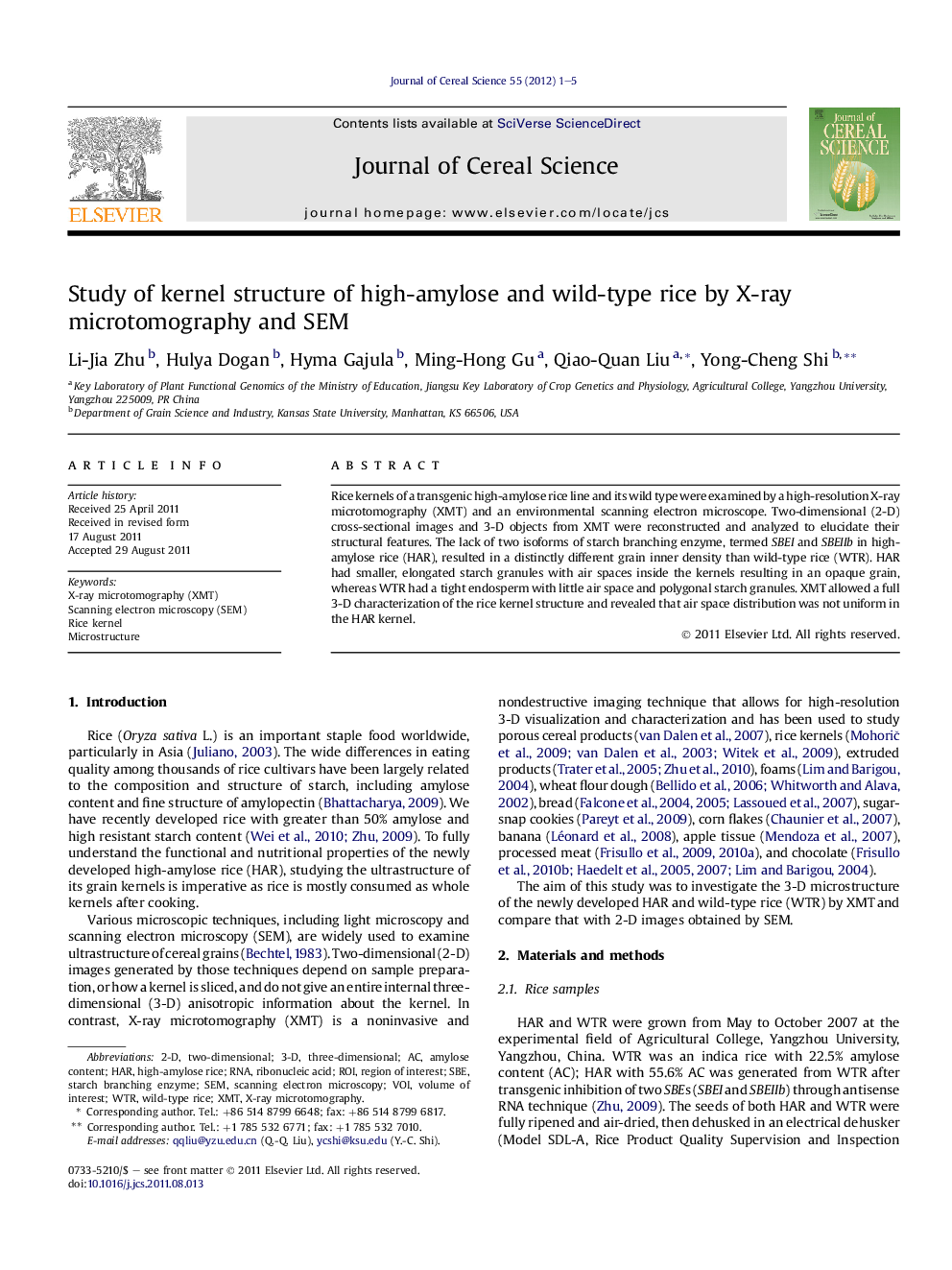| Article ID | Journal | Published Year | Pages | File Type |
|---|---|---|---|---|
| 4516037 | Journal of Cereal Science | 2012 | 5 Pages |
Rice kernels of a transgenic high-amylose rice line and its wild type were examined by a high-resolution X-ray microtomography (XMT) and an environmental scanning electron microscope. Two-dimensional (2-D) cross-sectional images and 3-D objects from XMT were reconstructed and analyzed to elucidate their structural features. The lack of two isoforms of starch branching enzyme, termed SBEI and SBEIIb in high-amylose rice (HAR), resulted in a distinctly different grain inner density than wild-type rice (WTR). HAR had smaller, elongated starch granules with air spaces inside the kernels resulting in an opaque grain, whereas WTR had a tight endosperm with little air space and polygonal starch granules. XMT allowed a full 3-D characterization of the rice kernel structure and revealed that air space distribution was not uniform in the HAR kernel.
► Rice with greater than 50% amylose content was developed. ► Ultrastructure of rice kernels was studied by X-ray microtomography. ► Images from X-ray microtomography were compared with scanning electron microscopy. ► High-amylose rice had more air spaces and gave an opaque appearance. ► Air space distribution was not uniform in the high-amylose rice kernel.
